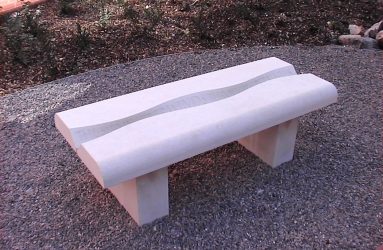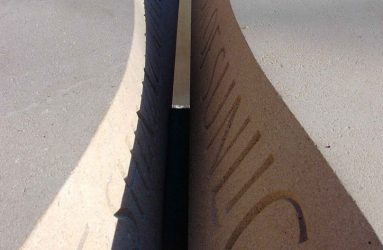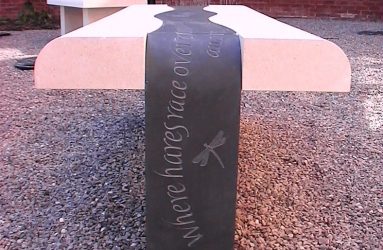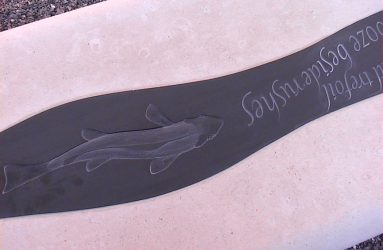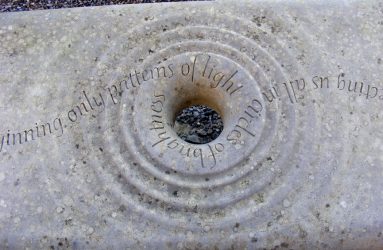
Materials 3D – KS3 art & design
Title: River benches
Artist: : Zoë Cull & Alex Evans
Location: Outside courtyard, Level 2, PFI building
Material: Portland stone and slate
Installed: 2006
Background
Three hand-carved benches in Portland stone by Zoë Cull and Alex Evans reflect the theme of a ‘swirling stream’ in both their form, the meandering curves of slate and rippled surfaces, and in the lines of poetry carved into the stone.
Zoë Cull and Alex Evans have been collaborating since 2003 in the design and crafting of creative, contemporary pieces in natural stone and associated materials. They produce organic elemental works, in which form, balance and tactility are key. Pieces may be functional or purely ornamental and frequently incorporate lettering. Inspiration is taken from the natural world, organic forms, the art and architecture of ancient and classical civilizations, geometry, symbolism.
“The benches are intended to provoke thought and to provide inspiration and pleasure to those who use them.” Zoë Cull
Lines of poetry were written by poet-in-residence Rose Flint and are integral to the finished benches.
Avon, Ebble, Bourne, Nadder, Wylye
shining rivers
carry light
sun moon star
light into land
and hearts of people
whose lives
wind through green hills
where hares race over primrose and trefoils
and trout snooze beside rushes
where larks sequin the air with songs
and herons gaze into crystal
rivers of life
connecting us all
in circles of brightness
with no end or beginning
only patterns of light
© Rose Flint, 2005
Images
Discussion points
- Look at the relationship between the lettering and the 3D shapes
- How does the viewer/reader move around the shapes when reading at the lettering
- Find 3 ways in which representations of water have been used
- Standing at the end of the bench with slate inlay look low along its length – what do you see? Why has this bench been made in this way?
- Have the artists been successful in depicting the fluidity of water? Discuss this in relationship with the materials used
Practical activities
- Look at how other artists work, such as Eric Gill’s lettering illustrations.
- Find another artist that uses lettering in their artwork.
- Look at printed lettering through a jar of water how does its size and shape change? Draw what you see.
- Does this relate to the way lettering was applied on the stone benches?
- Choose a theme such as water, fields, town or village and create a list of words that illustrate that theme.
- Using different types of 3D materials, for example: Clay, wire, junk modelling, found items, relief plates (built up with string and card) and see whether they create different effects when depicting your theme
- Write a poem using your theme words and look at ways of combining your words into a finished piece of artwork
Links
Compare these stone seats with the 3 pieces entitled ‘Drift’ by Peter Yarwood in the outside courtyard. Also look at Ivy Smith’s ‘Swimmers’ on the level 4 corridor. Consider these works alongside themes of abstraction, representation and materials.

